The park's fauna
The park welcomes a rich and diverse local fauna that needs to be protected. Discover below some of the species that populate the park!
Will you be able to find them during your stroll? If you encounter any of them, do not hesitate to send us your pictures with the location where you found them at parcdelacitadelle@mairie-lille.fr !
Mammals

The red squirrel: The red squirrel is a tree-dwelling animal that lives in forests. It is the largest rodent of this type of habitat. Its fur can be red, a dark brown, or even black!
You can see the squirrel climbing the trees or jumping from branch to branch, especially when the park is quieter in the mornings. Squirrel rope bridges will soon be installed in order to help them move around the park, particularly to cross over water.
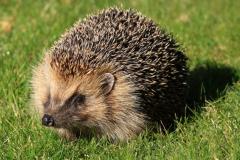
The hedgehog: The hedgehog is a well-known species and it is fundamental to protect it.
Two measures are particularly important to protect hedgehogs: creating pathways under roads that cross parks, and creating a network of shelters designed to provide a safe birthing zone away from cats and other predators.
You can observe many shelters made specifically for hedgehogs in the park: they are simply large piles of wood held together by wire fences. These shelters can also be useful for the wren, the shrew, the stone marten, the newt and the common toad.

The garden dormouse: Not to be mistaken for the European edible dormouse (absent from the region), the garden dormouse only goes out of his shelter at night and is a very discreet animal! You would hear it more easily than you would see it: its cry is long and high-pitched, especially during mating season.
It can be distinguished rather easily from other small rodents thanks to its fur: its underside fur is white, its back is brown-grey and its eyes are circled with black up to its rather large ears, while its long tail ends with a small brush of white and black hair.
The garden dormouse is about 20-30cm tall from the end of the snout to the end of the tail and weighs between 80 and 140 grams.
Its main food source comes from invertebrates as well as other small animals such as spiders, worms or snails. The dormouse particularly enjoys fruits during the summer! One particularity is that the dormouse hibernates in a large nest that it crafts in a nesting house, a pile of wood, or in our attics’ fibreglass.
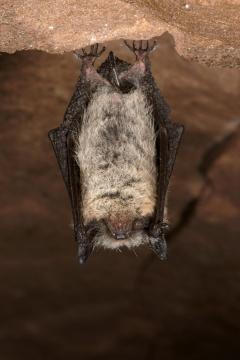
BATS
Nathusius’ pipistrelle: Pipistrelle comes from the Italian “pipistrello”, or “bat”. The term pipistrelles actually encompass several dozen species of bats in Europe. Four of them have been observed in Lille.
Nathusius’ pipistrelle is the largest of the pipistrelles, with a 5cm length and a wingspan of 22-25cm. It weighs between 6 to 15 grams and has a woolly back fur of brown to reddish colours, while its underside is lighter. It is a tree-dwelling species that spends the whole year in tree cavities. One individual of the species eats 2000 to 2500 small insects such as mosquitos per night.
This species of bats has a particular kind of behaviour in the Citadel park: the males stay in Lille and females migrate in Spring, up to 1000km in order to give birth in North-East Europe before coming back in Lille during autumn, where they form harems of 10-15 individuals with a male during mating season. They then spend the whole of winter with us before leaving again the following spring.
The city of Lille is particularly careful when trees are cut down: Nathusius’ pipistrelle is a protected species.
Daubenton’s bat: It is one of the most common species of bats around ponds and rivers in Europe. That being said, around and within Lille it is extremely threatened with less than 10 individuals within the Citadel park. Its feet are large with oval claws and short ears. Its fur is brown to grey on its back and eggwhite on its underside.
Daubenton’s bat hunts on the water surface, but only in the dark. It gives birth to one young per year.
It is partly for this species of bats that Lille has led the LUCIOLE project and created shelters within the Citadel’s undergrounds in order to favour the species’ hibernation conditions.
The whiskered bat: Smaller than Daubenton’s bat, the whiskered bat is recognisable with its dark face while the rest of its fur is lighter. It is not likely you will spot those physical traits since you would only observe it during the night, and only in flight. During winter, it hides in the undergrounds and bunkers within the Citadel. You will however be able to see the shelters that have been created to welcome it. It is the most common species in the undergrounds of the Citadel (around 20 individuals).
Birds

The kingfisher: This bird is very easily recognisable with its blue and red feathers. The biodiversity plan has contributed to the protection of this species with the creation of nesting sites in the riverbanks, allowing for their reproduction at the end of a tunnel that they dig. 4 couples are regularly observed in or around the park.
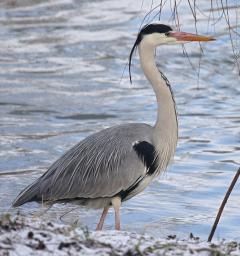
The grey heron: The heron is an emblematic bird of the area and is easily recognisable with its long neck, its narrow beak and long yellow legs. The heron mainly feeds off of fish, eels and batrachians. It also sometimes eats small rodents, insects, crustaceans or reptiles. There are many grey herons in Lille but they do not yet mate in the area due to the quiet they require around their nesting sites.
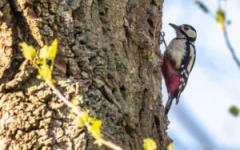
The great spotted woodpecker: This bird is particularly important for other species that rely on what it does within the environment. The woodpecker creates cavities in deadwood which then in turn benefit to other birds, insects and bats. The great spotted woodpecker is recognisable by its black, white and red feathers, and by the noise it makes when pecking the wood to communicate or to dig, either in search of larvae or to create shelter.
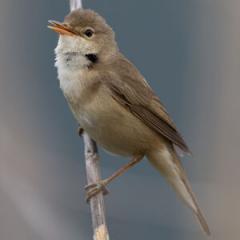
The common reed warbler: It is the most common type of the warblers, with a brown back and a white-reddish underside. It depends exclusively on reed beds for its habitat. Their development around the Voie des Combattants in the park will allow you to very easily hear the warbler and maybe even see it if you are lucky. If you hear a bird in May or June singing in the reeds, it is most likely one of the 20 individuals coming back from Africa to nest. There were only two of them in 2007.
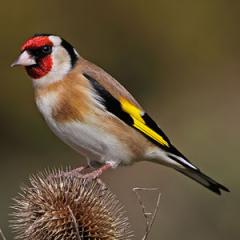
The European goldfinch: With a red face and a yellow area on its wing, the goldfinch is easily recognisable. The rest of its feathers is brown and white on its body, while its wings and tail are black. With the kingfisher, it is one of the most colourful birds in the region. The goldfinch mostly feeds off of grains. It used to be rare in Lille and was mostly seen in wastelands, but it is now abundant thanks to the mowed grass that allow it to find food (mainly dandelion seeds) or to centaurea grains in meadows. They also particularly like cabbage thistle, wild teasel and burdocks. You now know what to sow if you want to help that species!
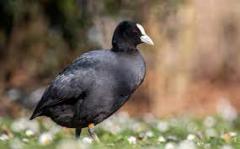
The coot: Coots are in the same family as gallinules, and are often found together. They are differentiable by their white badge on their head while gallinules have a red one. The feathers of coots are also exclusively black while gallinules are more brownish.
Coots nest in islands formed for example by fallen branches, where they lay up to ten spotted eggs.
The young are black with a bright orange face and blue/purple variations. This bright colour disappears quickly as they age.
Coots are vegetarian and of great importance in the quality of an ecosystem, because they improve the quality of environments by limiting the proliferation of algae, aquatic plants and duckweed that can proliferate when the water is too fertile. The installation of small rafts built specifically for coots facilitates their presence in the park.
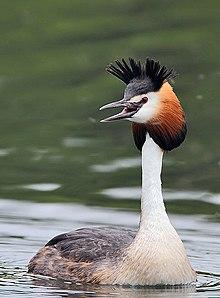
The great crested grebe: It is the largest of the grebes, recognisable by its crest (feathers) on its head. With the same nesting requirements as the coot, it by contrast exclusively feeds off of fish. Their mating rituals are particularly complex.
Amphibians
Several amphibian species can be observed in the park: the alpine newt, for instance, has benefited from the creation of ponds in the last few years. The number of individuals is on the rise. They have an orange underside.
You may also observe the European newt, measuring between 7 and 10cm with a flattened tail, a smooth skin with spots. It lays its eggs at the bottom of the ponds, like the alpine newt.
The common toad is also present in the park: it is the largest type of toad in Europe and the most common. The female can be up to 12 centimetres long. In the Citadel park, the individuals are abnormally small. Outside the mating season (they lay their eggs in the water in April), they like to live in decaying wood piles just like newts, especially during droughts and heatwaves. The wood then acts as a humid sponge and provides coolness.
Finally, you can also observe the pool frog, the marsh frog and the edible frog (which is a hybrid species of the former two). They are the stars of the Fossé de la Cunette: there, you can hear their powerful cries in May and June.

Fish
The water bodies of the park are home to various types of fish that require a good quality of water in order to thrive. You can for example find the ninespine stickleback in the Cunette. Like its cousin the three-spined stickleback, it has a specific habit of making a nest and having the males take care of the young.
You can also find the common dace, the common bleak, as well as the northern pike, carps and breams, but also the round goby coming from the Danube region thanks to the far-reaching river streams linked to the Deûle canal.
Insects
As for the smaller fauna of the park, you can find the great green bush-cricket, easily recognisable to its size (its body is 3 to 4cm long and its wings and legs are particularly long). Its cry is very powerful. You can hear it here!
Dragonflies are present in numbers as well, such as the large red damselfly, the goblet-marked damselfly and the red-eyed damselfly. They can be observed specifically in the water lilies along the Esplanade.
The sympetrum dragonflies are the most common types of dragonflies and can be observed in the park as well: the males’ body varies from an orange to a red tone.

Butterflies are also common in the park: you can try to look for the common brimstone, it has yellow-green wings with a red dot in the middle. You will also find, if you are lucky, the mallow skipper: it is harder to observe and it used to be rare in the area, but thanks to the warmer temperatures it is now more common in the park. The presence of plants that are specifically needed by its caterpillar (such as the malva sylvestris and the alcea rosea) also helps it thrive in the park.
As for the more common types of butterflies, you can also see the peacock butterfly, the red admiral (that relies on stinging nettle for its survival), or the comma (its caterpillar relies mostly on hop), as well as four species of blue butterflies such as the holly blue (that mates on ivy leaves) and the common blue butterfly (mostly present in the meadows mowed by sheep, where bird’s-foot trefoils grow).

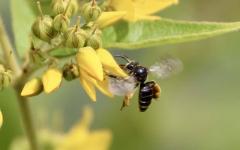
Several species of bees can be found in the park: the Macropis europaea, for instance, depends exclusively on the yellow loosestrife for its survival. This bee feeds its larvae with vegetal oil that it collects in the yellow loosestrife flower, mixed with pollen.





